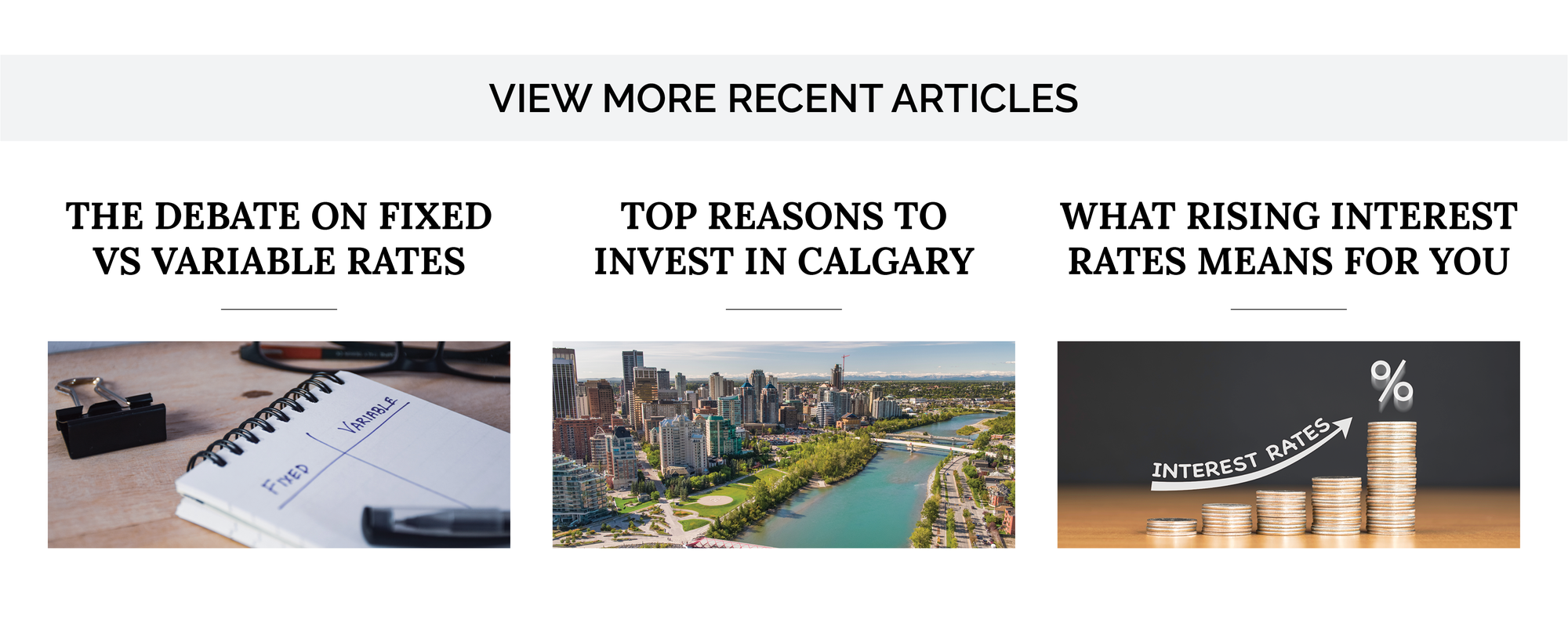
The Calgary Real Estate Board (CREB) recently released their annual market and economic review and forecast. This annual report examines the housing sector, the local Calgary economy, and other variables that impact real estate, such as lending rates and migration patterns.
Here is a look at what CREB says about the Calgary economy. If you are looking for insights into the Calgary real estate market, visit our sister post: CREB 2024 MARKET SUMMARY & 2025 FORECAST
2025 Forecast Summary
FORECAST RISK
Economic Risks and Housing Market Stability
While housing market conditions are expected to remain relatively stable, significant economic risks could influence local activity.
The primary risk is potential tariffs imposed by Canada’s largest trading partner. Forecasts vary widely, ranging from worst-case scenarios of 25 percent tariffs on all products to no tariffs. Most projections assume moderate tariffs, avoiding a recession while keeping Alberta as a leader in economic growth within Canada.
While most of the near-term risk is centred around tariffs, a federal election and potential policy shift regarding the energy sector could also impact our provincial economy.
Impact of Tariffs on Housing
Economic uncertainty could dampen housing activity, particularly in the first quarter of the year. If broad 25 percent tariffs are imposed on all exports, Alberta’s economy could enter a recession, negatively affecting investment, employment, and consumer confidence at a time when housing supply is increasing.
Conversely, if the energy sector is exempt from tariffs or tariffs are short-lived, Alberta could experience a stronger economic climate. This scenario would likely support improved job growth, higher interprovincial migration, and stronger sales and price growth in the housing market.
UPSIDE RISK TO THE FORECAST
Tariffs Mostly Avoided a No-Trade War
Exclusion of the energy sector and no significant change to trade terms could lead to stronger economic growth and rising investment. This could lead to higher employment, attract interprovincial migration, and improve consumer confidence, driving stronger housing demand and price growth.
Easing Lending Rates
Lower lending rates, combined with stable economic conditions, could support stronger-than-expected sales, slowing the shift to balanced conditions.
DOWNSIDE RISK TO THE FORECAST
Broad 25% Tariffs on All Exports & Trade War
Severe 25 percent tariffs on exports could push Alberta’s economy into a recession, reducing investment, employment, and consumer confidence. This would lower housing demand and sales while supply levels are rising, driving down prices.
Economic Uncertainty Affecting Consumer Confidence
Prolonged economic uncertainty, even without broad tariffs, could weaken consumer confidence and delay housing decisions.
Key Economic Indicators
ECONOMIC SUMMARY
Alberta’s energy sector continues to thrive, benefiting from higher energy prices, favourable exchange rates, and increased production following the opening of the TMX pipeline. Additionally, substantial population growth—driven by both international and interprovincial migration—has bolstered housing and construction activity despite the challenges posed by higher lending rates. These factors have led many forecasters to predict that Alberta will lead all provinces in economic growth in 2024.
Looking ahead to 2025, concerns over potential U.S. tariffs have tempered growth expectations. Despite these revisions, most forecasts anticipate Alberta’s economy will continue to expand. Beyond the energy sector, economic growth is expected to be supported by investments in alternative energy, carbon capture and storage, food manufacturing, and artificial intelligence data centers. These industries, combined with anticipated rate cuts by the Bank of Canada, are set to play a key role in driving economic activity.
According to ATB Economics, if Alberta avoids U.S. tariffs, economic growth could be nearly double current estimates. This scenario would likely lead to stronger-than-expected interprovincial migration and increased housing activity.
Alberta’s economy is poised for growth in 2025, driven by investments in alternative energy, carbon capture, food manufacturing, and AI—yet potential U.S. tariffs could reshape the trajectory.

EMPLOYMENT
Calgary’s unemployment rate increased in 2024 as high migration levels caused the labour force to expand more quickly than job growth. However, the rise in unemployment primarily affected younger demographics and newcomers, which has had a limited impact on housing ownership demand.
Calgary employment growth in 2024 exceeded expectations, thanks to notable gains in manufacturing, followed by accommodation and food services, transportation and warehousing, and information, culture, and recreation sectors.
Looking ahead to 2025, employment levels are expected to grow by two percent, driven by gains in construction, retail trade, healthcare, and education. At the same time, easing migration is projected to slow labour force growth helping reduce unemployment rates by the end of 2025.

POPULATION
Record-high international migration, combined with the resurgence of interprovincial migration, has been a key driver of housing activity in recent years. Although migration levels in Alberta are starting to ease, they remain exceptionally strong. This has contributed to a 2024 provincial population growth rate of 4.4 percent, with the Calgary region seeing over five percent growth—both exceeding earlier forecasts.
Federal immigration policy changes are expected to slow the influx of both temporary and permanent international migrants. Interprovincial migration is projected to slow from the elevated levels seen in recent years, bringing Alberta’s population growth rate down to 1.9 percent in 2025, according to ATB Economics. While Calgary’s population growth is also expected to slow, it is anticipated to remain higher than the provincial average.

HOUSING SUPPLY
NEW HOME
By the end of November 2024, 22,563 housing units had been completed for the year, including 9,340 purpose-built rentals. This increased supply has eased pressure on both resale prices and rental rates.
New home starts will reach record highs in 2024, with year-to-date starts of 22,652 already surpassing 2023’s annual total of 19,579. Starts rose across all property types, with nearly half being apartment-style units, including almost 5,000 purpose-built rentals. As these units are completed, consumers will benefit from more supply choices, further relieving pressure on resale home prices in 2025.
Forecasters expect that new home starts will slow from their record-high pace in 2024 as the market moves toward rebalancing and the gap between housing construction and household formation narrows. Despite this slowdown, activity is expected to remain strong, driven by lower interest rates that support housing demand and opportunities for move-up and first-time buyers. However, the additional supply in the new home market is likely to influence some segments of the resale market.

RENTAL
Over the past two years, declining rental vacancies and rising rental rates have driven significant growth in rental construction. By the October 2024 CMHC rental survey, over 5,500 purpose-built rental units had been added to the market. This increase in supply is raising vacancy rates, particularly in the downtown area, where several new buildings were available for rent in the last quarter of 2024. The improved supply is helping to ease pressure on rental rates.
Supply growth is expected to continue into 2025 as more rental units are completed. At the same time, slower international migration is anticipated to temper demand. These factors should further improve rental availability and continue to weigh on rental rates in 2025.





